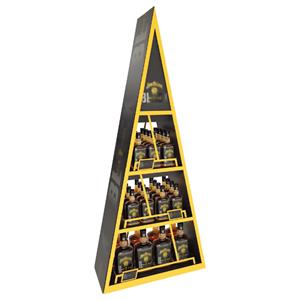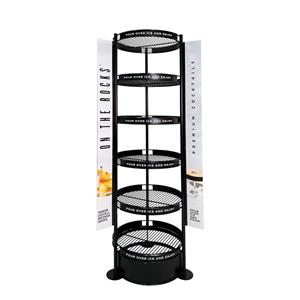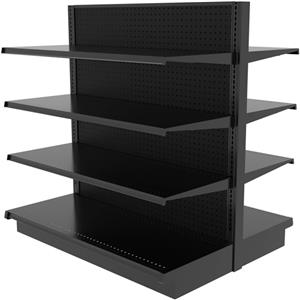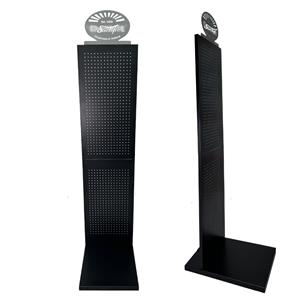Standardization Reshapes Europe’s Retail Display Future
Table of contents
1)Introduction: The Call for Unity in Europe’s Retail Industry
2)From Fragmentation to Collaboration: Standardization Begins
3)Grocery Store Displays: Merging Mediterranean Style with Nordic Efficiency
4)Supermarket Shelving: The Modular Revolution
5)Retail Store Fixtures in the IoT and Energy-Saving Era
6)Creativity Within Standards: Freedom Through Structure
7)FAQ – Cost, Compatibility, and Implementation Timeline
8)Sintop Value
As European countries rally around the slogan "We need greater unity," the retail fixtures industry is also undergoing a major cross-border consolidation drive. In the past, a disparate set of national standards resembled an unpatched system. Now, under pressure from the fiercely competitive US and European markets, unified design and production specifications are finally on the agenda.
The core of this change lies not simply in political decisions, but in the quiet revolution of shelving and display equipment. As the "three brothers" of retail space infrastructure, retail store fixtures, grocery store displays, and supermarket shelving are becoming key players in this consolidation. They are no longer simply tools for supporting merchandise; they are the secret weapon behind Europe's retail efficiency revolution.
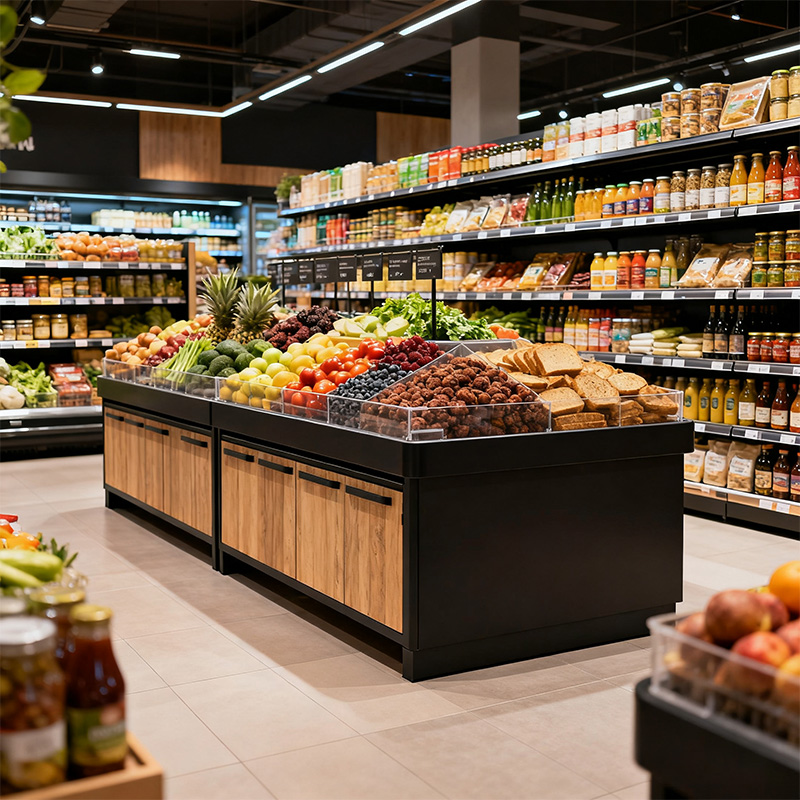
1. From Chaos to Collaboration: The First Signal of Standardization
European retail fixtures manufacturers have long been driven mad by disparate national standards. Germany's load-bearing standards could lift a cow, while Portugal's are as light as a balloon; France's fire regulations are as strict as those guarding the Louvre, while Nordic material certifications favor environmental protection. The result? Multiple versions of the same retail store fixtures are produced.
Now, the industry has finally had enough. Standardized standards mean more efficient production, smoother logistics, and fewer tedious translations. For international retailers, there's no need to worry about the drain pipes in French grocery store displays not fitting into Spanish connections. Within three years, the entire supermarket shelving system is expected to adopt unified production standards, streamlining the supply chain and potentially reducing operating costs by 40%.
2. Food Display Shelves: A Perfect Blend of "Mediterranean Style" and "Scandian Smart Manufacturing"
The fresh produce section is the heart and soul of the supermarket, and a major energy consumer. In the past, different climates dictated different equipment designs: Southern Europe relied on ventilation, Northern Europe relied on insulation, and neither was viable. Now, standardization has finally brought the two together. The new generation of grocery store displays combines ventilation design inspired by Southern Europe with energy-saving technologies from Northern Europe, reducing cold chain energy consumption by 15% and lowering maintenance costs. Best of all, retailers can now purchase in bulk, eliminating the need to worry about different sizes and screws from country to country.
These improvements not only enhance the performance of grocery store displays but also drive intelligent upgrades in retail store fixtures, such as the standardization of temperature control systems and lighting modules. Meanwhile, the pace of upgrades in supermarket shelving in the dry goods sector has also accelerated, driven by the fresh produce sector.
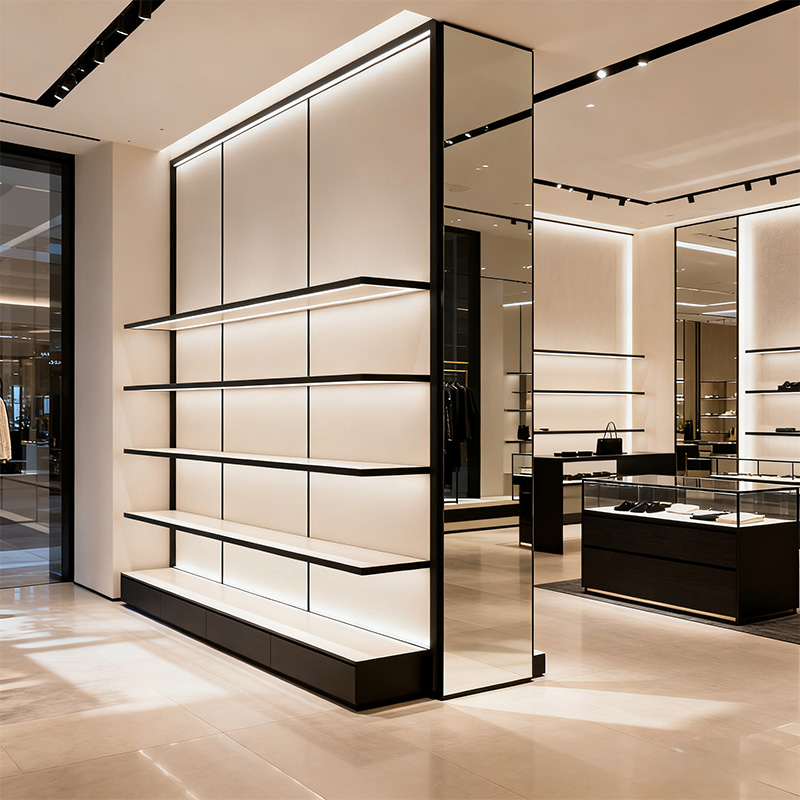
3. Technological Leaps in Supermarket Shelving: The "Shelving Philosophy" of the Modular Era
Don't assume that shelves are simply a few steel pipes and panels. The EU's "2025 Shelving Guidelines" completely overturn this impression: Future supermarket shelving must be modular and quick-assemble, capable of being assembled by even an intern in 15 minutes. This standard will revolutionize the entire retail store fixture ecosystem, standardizing everything from connector specifications to anti-rust coatings. Display adjustments during promotional periods will be reduced from three hours to 45 minutes—meaning employees have more time to make coffee and managers can smile faster.
At the same time, the boundaries between cold chain and dry goods displays will be bridged. Grocery store displays and supermarket shelving will finally achieve seamless integration, freeing designers from the dreaded interface size constraints.
4. Intelligence and Energy Efficiency: The New Retail Logic of the Next Five Years
Over the next five years, the key words for European retail fixtures will be intelligence, energy efficiency, and standardization.
First, retail store fixtures will fully enter the "Internet of Things" era, with shelves embedded with sensors that record customer flow and product turnover data in real time.
Second, grocery store displays will become even more energy-efficient, with everything from LED lighting to intelligent temperature control designed to reduce electricity costs and carbon emissions. Finally, Supermarket shelving will see unified material and structural standards, making international sourcing less of a nightmare. Retailers can finally use the same shelving across Europe, much like IKEA's "one global mold."
These trends will reduce R&D costs for manufacturers and give shop owners a fresh, fresh look.
5. The Future of European Retail: Standardization Can Still Offer Individuality
Some worry that standardization will diminish store individuality? The opposite is true. A unified structural foundation provides designers with a clean canvas.
When Retail store fixtures no longer vary from country to country, creativity can flourish. When Grocery store displays are standardized in size, brand display themes can be more freely switched. And when Supermarket shelving becomes flexible and modular, space designers can freely reimagine shopping flows.
This is not just a technological upgrade; it's a revolution in retail thinking—making standardization a starting point for inspiration, not an end point.
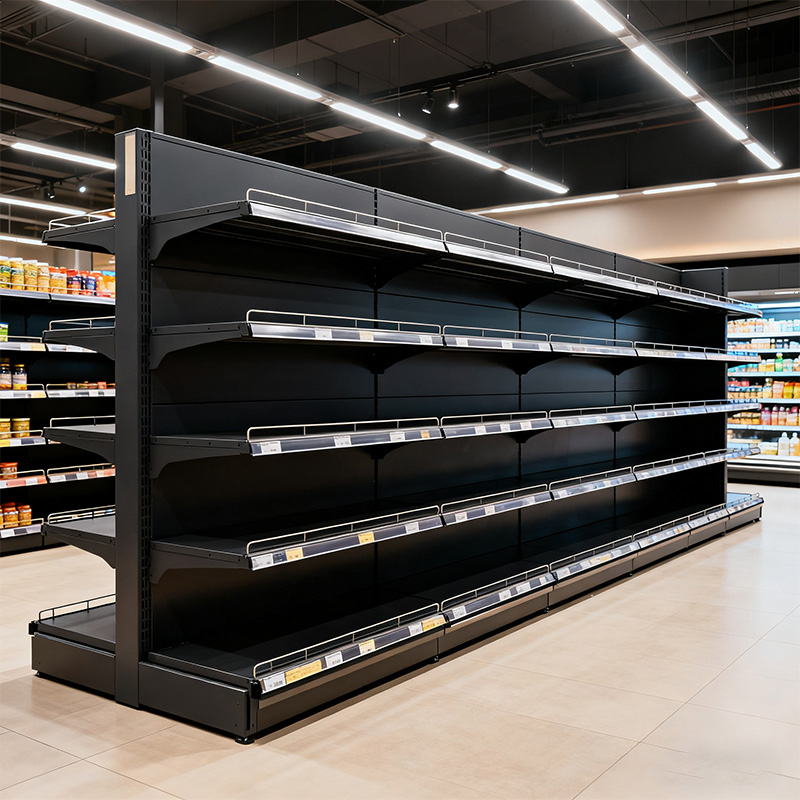
FAQ
Q: Will standardization make equipment more expensive?
A: R&D investment will increase slightly in the short term, but in the long term, unified standards will enable mass production of retail store fixtures, reducing costs by 20%-30%.
Q: Can old equipment still be used?
A: Most supermarket shelving can be made compatible via retrofit kits; Grocery store displays will primarily be upgraded in terms of temperature control and energy efficiency, and will not be eliminated across the board.
Q: Will unified standards stifle creativity?
A: Not at all. Standardization provides greater stability to the underlying structure and, in turn, allows greater freedom in the design of Retail store fixtures.
Q: What should small and medium-sized retailers do?
A: Don't panic; approach the issue in stages. Start by upgrading Grocery store displays and Supermarket shelving in main aisles, and then gradually transition.
Q: When will full implementation be implemented?
A: The EU plans to release standards for retail store fixtures by the end of 2024, develop specifications for grocery store displays by 2025, and complete unified standards for supermarket shelving by 2026.
Sintop Value
At Sintop, we view Europe’s retail standardization wave as a major opportunity for smarter, more sustainable growth.
Our team embraces modular engineering, precision manufacturing, and eco-efficient coatings that align with the coming EU retail fixture standards.
Through our innovative retail store fixtures, grocery store displays, and supermarket shelving, Sintop helps global clients achieve unified aesthetics, flexible layouts, and long-term reliability.
We don’t just follow the trend — we help shape it, offering customizable standard solutions that merge efficiency with brand individuality.
As the industry evolves, Sintop stands ready to support retailers and designers across Europe with future-ready display systems designed for both compliance and creativity.

Contact information
Website: www.sintopfixtures.com
Wechat/WhatsApp: +86 15980885084
Email: elly@xm-sintop.com
FAQ
1. What are store fixtures?
Store fixtures are essential equipment and furniture used in retail spaces to display, organize, and store merchandise. Examples include shelving units, racks, display cases, counters, and hooks.
2. Why are store fixtures important?
Store fixtures enhance the shopping experience by organizing products, improving accessibility, maximizing space, and creating appealing displays that attract customers and boost sales.
3. What types of store fixtures are commonly used?
Common types of store fixtures include:
Shelving Units(wall shelves, free-standing shelves, adjustable shelving)
Display Cases (glass cases, countertop cases)
Racks (clothing racks, display racks)
Counters (checkout counters, service counters)
Hooks and Pegboards
End Caps
Signage and Graphics
Mannequins
4. How do I choose the right store fixtures for my retail space?
Consider your merchandise type, store layout, and branding needs. Fixtures should be functional, complement your store's design, and fit within your budget. Evaluate your space to determine the best fixture types and configurations for optimal product presentation and customer flow.
5. Can store fixtures be customized?
Yes, many store fixtures can be customized to align with your store's branding and specific needs. Customization options include materials, colors, sizes, and designs. Collaborating with a fixture supplier or designer can help create fixtures that match your store’s style and functional requirements.
6. How can I maximize space with store fixtures?
Utilize fixtures that optimize vertical space, such as wall-mounted shelves and tall display racks. Modular and adjustable fixtures can adapt to changing merchandise or store layouts. Plan your store layout carefully to ensure efficient use of space and smooth customer flow.
7. How do I maintain store fixtures?
Regularly clean and inspect fixtures to ensure they remain in good condition. Check for wear and tear, and repair or replace damaged parts. Follow manufacturer guidelines for maintenance and cleaning to extend the lifespan of your fixtures.
8. Can store fixtures be used for different types of retail stores?
Yes, store fixtures can be adapted for various retail environments, including clothing stores, electronics shops, grocery stores, and more. The choice of fixtures depends on the specific needs and merchandise of the store.
9. How can store fixtures improve the customer experience?
Well-designed fixtures make products easy to find and browse, enhancing the overall shopping experience. Effective use of fixtures creates an organized, aesthetically pleasing environment that encourages customers to spend more time in the store.
10. Where can I purchase store fixtures?
Store fixtures can be purchased from specialized fixture suppliers, retail equipment stores, or custom fixture manufacturers. Online retailers and local suppliers also offer a wide range of options.

